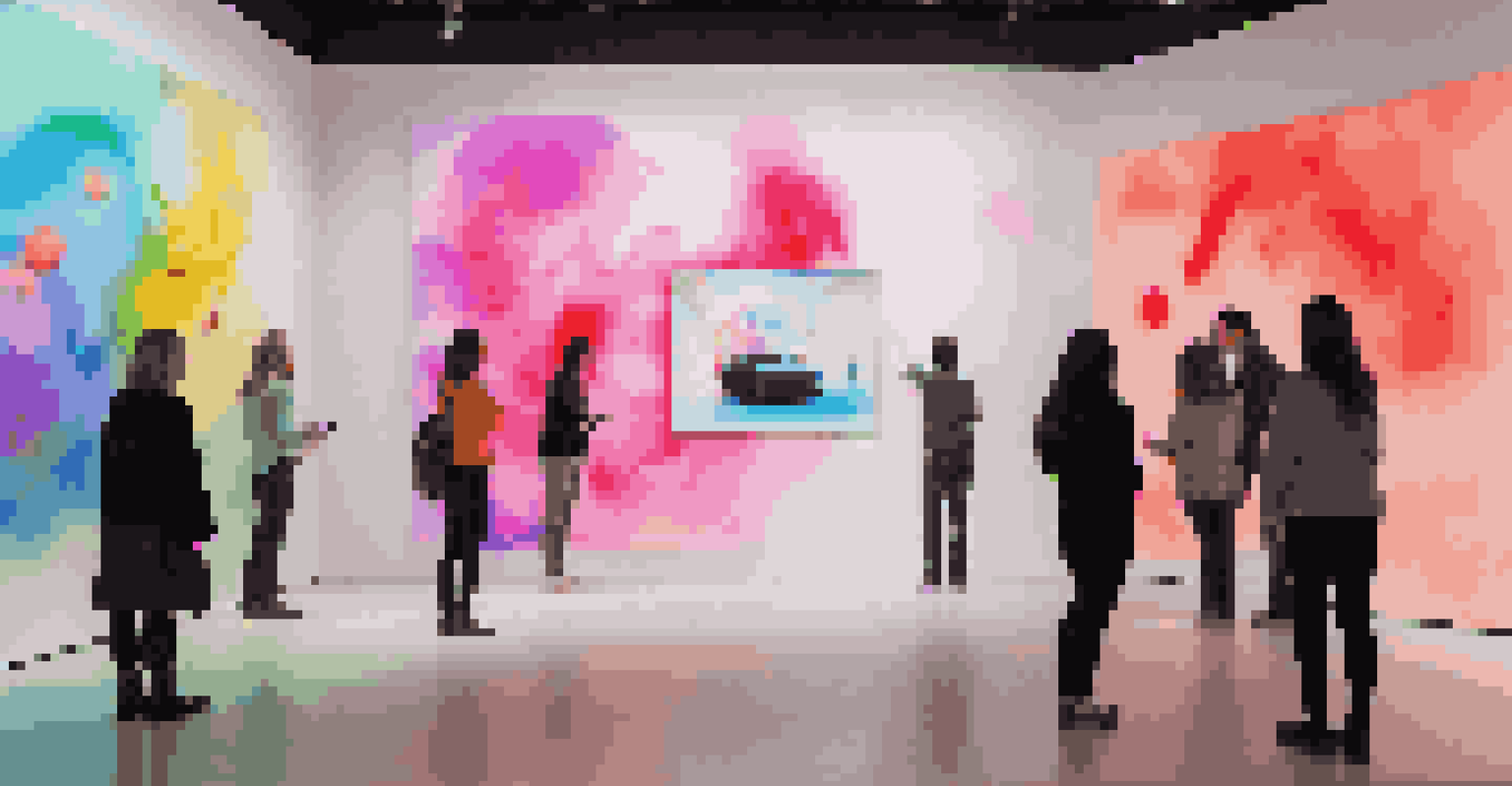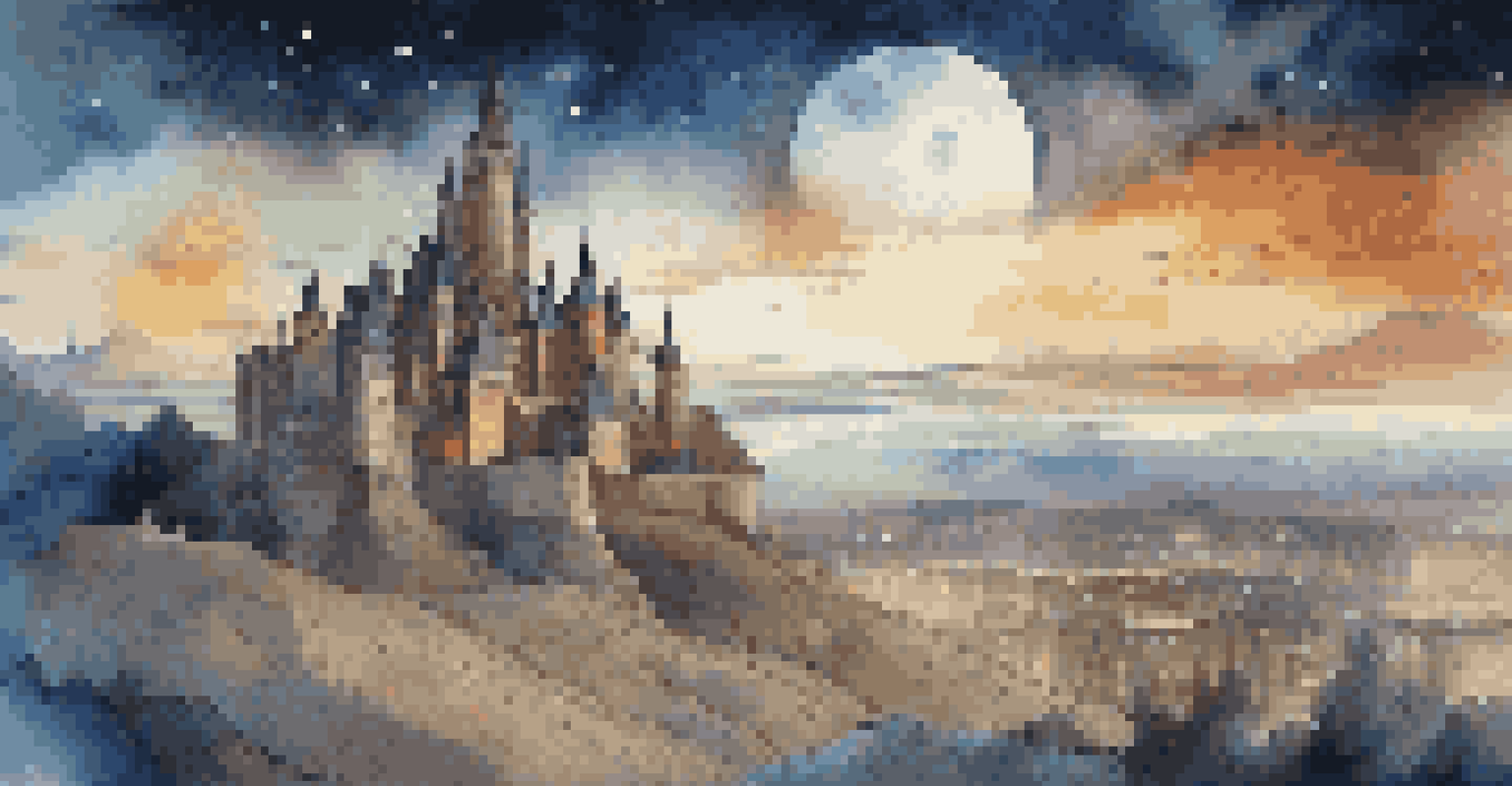The Role of Time in Digital Art: New Frontiers and Challenges

Understanding Time's Influence on Digital Art Creation
Time plays a crucial role in the creation of digital art, shaping both the process and the final product. Artists often face tight deadlines, which can influence their creative choices and the techniques they employ. For instance, a piece created in a rush may lack the depth and detail that a more leisurely approach could achieve. This constant race against time can lead to both innovative solutions and potential compromises in quality.
Time is what we want most, but what we use worst.
Moreover, the digital medium allows for a unique relationship with time, where artists can manipulate it to enhance their work. They can use software to rewind, redo, or fast-forward their creative process, blurring the lines between different stages of art creation. This flexibility can be both a blessing and a curse; while it encourages experimentation, it can also lead to procrastination or overthinking.
Ultimately, understanding how time influences creativity is essential for digital artists. By learning to balance time constraints with artistic integrity, they can navigate the challenges that come with the digital landscape, ensuring their work remains both timely and timeless.
The Evolution of Time-Based Media in Digital Art
Digital art has evolved dramatically, particularly with the rise of time-based media like video art and animation. These forms allow artists to explore narrative structures and temporal dynamics in ways that static art cannot. For example, a digital animation can tell a story over several minutes, engaging the viewer in a temporal experience that unfolds in real-time.

This evolution has opened new frontiers for artists to experiment with how time influences perception and meaning. Artists can play with pacing, rhythm, and even time loops to create immersive experiences. Take, for instance, interactive installations that invite viewers to control the flow of the piece, making their engagement a part of the artwork itself.
Time Shapes Digital Art Creation
Artists must navigate tight deadlines and the flexibility of digital tools to balance creativity and quality in their work.
However, this shift also presents challenges, as artists must adapt to new tools and technologies continuously. Embracing these changes requires not only technical skills but also a willingness to experiment with how time affects art's delivery and impact.
The Role of Technology in Shaping Time in Digital Art
Technology has revolutionized how artists engage with time in their work. From digital painting software that allows for instant changes to complex animation programs that simulate realistic movement, the tools available have expanded creative possibilities. Artists can now manipulate time in ways that were unimaginable just a few decades ago.
The only reason for time is so that everything doesn't happen at once.
For example, software like Adobe After Effects enables artists to create intricate animations that can stretch or compress time, transforming how a narrative is perceived. This capability allows for a more profound exploration of themes, such as the passage of time or the juxtaposition of past and present. Artists can layer different timeframes within one piece, creating a rich tapestry of experiences.
However, reliance on technology can also introduce challenges, such as software limitations or the learning curve associated with new tools. As artists navigate these technological advancements, they must find ways to maintain their unique voice while leveraging these innovations to enhance their work.
Time as a Concept: Philosophical Perspectives in Digital Art
The concept of time is not just a practical consideration; it also invites philosophical exploration within digital art. Artists often grapple with how time can be perceived, experienced, and represented. For instance, the concept of 'eternalism' suggests that past, present, and future are equally real, prompting artists to create works that reflect this multidimensional understanding of time.
This philosophical perspective can lead to innovative artistic expressions. Consider an artwork that juxtaposes historical imagery with contemporary elements, challenging viewers to reflect on the continuity of experiences across time. Such pieces encourage audiences to engage with time not merely as a linear progression but as a complex interplay of moments.
Audience Interaction Redefines Art
Interactive installations create a dynamic relationship with time, allowing viewers to influence the art experience in real-time.
By embracing these philosophical dimensions, digital artists can deepen the impact of their work, inviting viewers to explore their own relationships with time. This exploration not only enhances the artwork's meaning but also enriches the viewer's experience, creating a dialogue that transcends the visual.
Audience Interaction and Time in Digital Art Experiences
In the realm of digital art, audience interaction introduces a dynamic relationship with time. Interactive installations allow viewers to engage with art in real-time, making their actions a crucial element of the experience. This interaction creates a sense of agency, where the audience influences the artwork's progression and outcome.
For example, a digital piece might change based on how long a viewer lingers or the choices they make during their visit. This real-time feedback loop not only enhances engagement but also invites viewers to reflect on their relationship with time and art. It transforms the passive act of viewing into an active dialogue, enriching the overall experience.
However, this interaction can also lead to challenges in how art is perceived. Artists must consider how to create meaningful interactions that resonate with diverse audiences while managing the inherent unpredictability of audience engagement. Balancing these elements is key to crafting compelling digital art experiences.
The Impact of Social Media on Time in Digital Art
Social media has dramatically changed the landscape of digital art, particularly regarding time and visibility. Artists now face the pressure of creating content that captures attention quickly, as the fast-paced nature of social media often prioritizes immediacy over depth. This shift can lead to a focus on producing shareable snippets rather than fully developed works.
However, social media also offers artists a unique platform to showcase time-based art forms. For instance, short video clips of animations or time-lapse processes can engage viewers who may not have the time or inclination to explore longer pieces. This accessibility can help artists reach a broader audience, fostering connections that might not have been possible in traditional gallery settings.
Social Media Alters Artistic Focus
The fast-paced nature of social media pressures artists to produce quick, shareable content, often at the cost of depth and artistic integrity.
Despite these advantages, the challenge remains to balance the demands of social media with the integrity of artistic expression. Artists must navigate this landscape carefully, finding ways to create meaningful work that resonates with their audience while still adapting to the fast-paced digital environment.
Future Challenges: Navigating Time in Digital Art
As digital art continues to evolve, artists will face new challenges related to time and its representation. The rapid advancements in technology mean that tools and techniques are constantly changing, requiring artists to adapt quickly. This can create a sense of pressure, as staying current while maintaining artistic integrity can be a delicate balance.
Moreover, the increasing expectation for immediacy in today's digital culture can undermine the depth of art. Artists may feel compelled to prioritize speed over substance, risking the quality and thoughtfulness of their work. Finding ways to create art that resonates on a deeper level while navigating these pressures will be a key challenge moving forward.

Ultimately, the future of digital art will depend on how artists embrace and respond to these challenges. By remaining committed to their vision and exploring innovative ways to engage with time, they can push the boundaries of what digital art can achieve, ensuring that their work remains relevant and impactful in an ever-changing landscape.